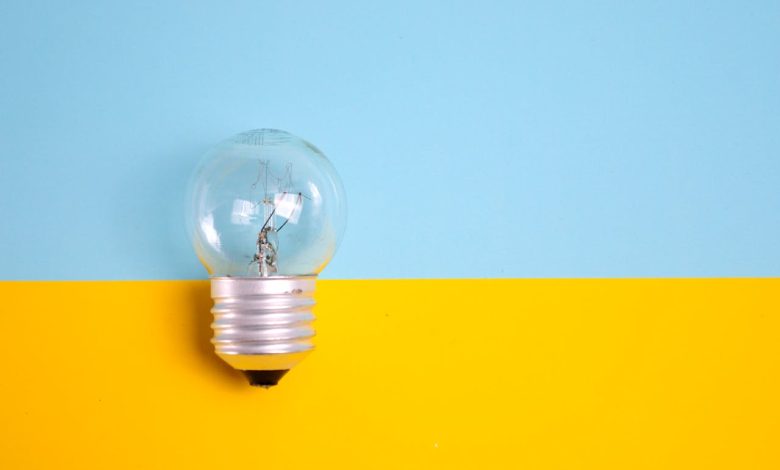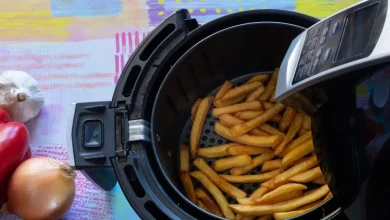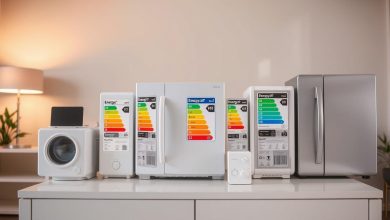Top 5 Eco-Friendly Appliance Upgrades to Make Your Home More Energy Efficient

If you’re looking to make your home more eco-friendly, now’s the perfect time to consider some upgrades. In today’s market, eco-friendly appliance upgrades are essential, and smart green home improvements can transform your space.
These energy efficient upgrades not only lower your energy bills but also introduce sustainable home appliances into your daily life. When combined with top green upgrades, these changes can truly revolutionize your living space. In this article, we discuss five major upgrades while reinforcing how eco-friendly appliance upgrades, green home improvements, energy efficient upgrades, sustainable home appliances, and top green upgrades can work together to create a more efficient home environment.
Table of Contents
Key Takeaways
- Eco-friendly appliance upgrades and green home improvements are essential for reducing energy costs and environmental impact.
- Energy efficient upgrades like new windows and insulation help optimize your home’s performance.
- Integrating sustainable home appliances is a modern approach to top green upgrades for long-term savings.
- These upgrades deliver both financial benefits and improved comfort.
1. Solar Panel Installation

Okay, so you’re thinking about solar panels? Awesome! It’s a big step, but it can really pay off in the long run. Let’s break down what you need to know.
First off, solar panels let you make your own electricity. That means you’re pulling less from the grid, which is good for the environment and your wallet. Plus, who doesn’t love the idea of sticking it to the power company a little bit?
Installing solar panels can significantly reduce your electricity bills.
Now, it’s not all sunshine and rainbows. There’s a bit to consider:
- Upfront Cost: Solar panels aren’t cheap. You’re looking at a pretty significant investment upfront. But think of it as an investment, not just an expense. You can check solar panel costs in Texas to get an idea of the price.
- Installation: Unless you’re super handy (and comfortable working on your roof), you’ll need to hire professionals. Get a few quotes to make sure you’re getting a fair price.
- Maintenance: Solar panels are pretty low-maintenance, but they’re not zero-maintenance. You might need to clean them occasionally, especially if you live in a dusty area.
Think about your energy usage. How much electricity do you use each month? This will help you figure out how many panels you need. Also, look into any government incentives or tax credits. They can really help offset the initial cost.
Here’s a quick look at potential savings:
| Factor | Impact |
|---|---|
| Reduced Bills | Lower monthly electricity costs |
| Increased Home Value | Potential boost to your home’s market value |
| Tax Credits | Federal and state incentives can reduce the initial investment |
So, is solar right for you? Do your homework, get some quotes, and see if it makes sense for your situation. It could be one of the smartest eco-friendly upgrades you ever make.
2. Energy-Efficient Windows
Okay, so your old windows are probably letting a ton of air in and out, right? It’s like trying to heat or cool your house with a window open. Not ideal. That’s where energy-efficient windows come in. They’re designed to keep the outside air out and the inside air in, which can seriously cut down on your energy bills.
Replacing those old windows can really make a difference in your home’s comfort and energy use.
Think about it: no more drafts in the winter, and your AC won’t have to work overtime in the summer. Plus, new windows can actually make your house look nicer, which is always a bonus.
I remember when my neighbor, Sarah, replaced her windows last year. She was complaining about how expensive it was, but now she’s always talking about how much lower her energy bills are. She even said her house feels warmer in the winter. So, yeah, it seems like a pretty good investment.
Here’s a few things to consider:
- Window Materials: Vinyl, wood, fiberglass—they all have different pros and cons in terms of cost, durability, and insulation.
- Glazing: Double-pane or triple-pane? Low-E coatings? It can get confusing, but basically, more panes and special coatings mean better insulation.
- Installation: Don’t try to DIY this unless you really know what you’re doing. A bad install can negate all the benefits of new windows. Consider replacing old windows with energy-efficient options.
It’s a big investment, sure, but it’s one that can pay off in the long run. Plus, you’ll be doing your part for the environment, which is always a good feeling.
3. Advanced HVAC Systems

Okay, so your old heating and cooling system is probably costing you a fortune. Seriously, think about all that wasted energy! Upgrading to a modern, efficient HVAC system can make a huge difference. We’re talking about more than just a new air conditioner; it’s about a whole new level of comfort and savings.
Modern HVAC systems are designed to be way more efficient than older models. They use less energy to heat and cool your home, which translates to lower utility bills. Plus, many of them come with smart features that can help you optimize your energy usage even further. Think about it: a system that learns your habits and adjusts the temperature automatically? Pretty cool, right?
Switching to a modern HVAC system isn’t just about saving money; it’s also about improving your home’s air quality and overall comfort. You’ll breathe easier knowing you’re doing your part for the environment and enjoying a more comfortable living space.
Consider an energy-efficient HVAC system for your home. You might be surprised at how much of a difference it makes. Plus, it’s an investment that pays off in the long run. You can also look into heat pumps, which are super efficient and can both heat and cool your home. It’s like getting two appliances in one!
Here are a few things to keep in mind when you’re shopping for a new HVAC system:
- Energy Efficiency Ratings: Look for high SEER (Seasonal Energy Efficiency Ratio) and HSPF (Heating Seasonal Performance Factor) ratings. The higher the rating, the more efficient the system.
- Smart Features: Consider systems with programmable thermostats, zoning capabilities, and smart home integration.
- Professional Installation: Make sure to hire a qualified HVAC technician to install your new system. Proper installation is crucial for optimal performance and efficiency.
4. Insulation Improvements

Okay, so you’re thinking about insulation. Good move! It’s not the flashiest upgrade, but it’s one of the smartest. Think of it like this: you wouldn’t wear a t-shirt in the winter, right? Your house shouldn’t either. Proper insulation is like a cozy blanket for your home, keeping the heat in during the winter and out during the summer.
Upgrading your insulation can seriously cut down on your energy bills. I mean, who doesn’t want to save money? Plus, it makes your home way more comfortable. No more drafty rooms or sweating through the summer. It’s a win-win.
Proper insulation is critical to maintaining temperature regulation within your home.
I remember when we bought our place, the insulation was practically non-existent. The heating bills were insane! After we upgraded, it was like living in a completely different house. Seriously, best investment ever.
Here’s a few things to consider:
Sealing Leaks: Don’t forget to seal up any cracks or gaps around windows and doors. Even small leaks can let a lot of air escape.
Attic Insulation: This is usually the first place to start. Heat rises, so if your attic isn’t properly insulated, you’re basically throwing money out the roof.
Wall Insulation: Adding insulation to your walls can make a huge difference, especially in older homes.
5. Water-Saving Fixtures

Okay, so you’re thinking about saving some water, huh? Smart move! Not only is it good for the planet, but it can also seriously cut down on your water bill. Let’s talk about some easy swaps you can make around the house.
First off, think about your shower. How old is that showerhead? Swapping it out for a WaterSense labeled products is a no-brainer. These things are designed to use way less water without sacrificing water pressure. You won’t even notice the difference, except when you see your next water bill!
Next up: faucets. Those old, leaky faucets? They’re not just annoying; they’re wasting water and money. New, low-flow faucets are super easy to install, and they look pretty slick too. Plus, some of them even have built-in aerators that mix air with the water, so you use even less.
And then there’s the big one: the toilet. If you’ve got an old toilet, it’s probably using a ton of water with every flush. Modern, high-efficiency toilets use a fraction of the water, and some of them even have dual-flush options, so you can use even less water for liquid waste. Seriously, this is one upgrade that can make a huge difference.
Switching to water-saving fixtures is one of the easiest and most effective ways to reduce your environmental impact and save money. It’s a win-win!
Here’s a quick rundown of some options:
- Low-flow showerheads
- Aerated faucets
- Dual-flush toilets
- Rainwater harvesting systems for irrigation
So, what are you waiting for? Get out there and start saving water!
Wrapping It Up
Making your home more energy efficient doesn’t have to be complicated. With targeted eco-friendly appliance upgrades and thoughtful green home improvements, you can achieve remarkable energy efficient upgrades. By investing in quality sustainable home appliances and focusing on the top green upgrades available, your home becomes a model of modern efficiency. These combined strategies not only save you money but also create a healthier, eco-friendly environment.
In summary, every upgrade you make—be it eco-friendly appliance upgrades, thoughtful green home improvements, effective energy efficient upgrades, or the integration of sustainable home appliances—contributes to achieving the top green upgrades for your home. Embrace these strategies today and watch your home transform into a beacon of efficiency and sustainability.
Looking for more insights? Check out Navigating Home Health Risk NYT: Your Latest Weekly NYT Update For 2025 for complementary home health tips. Read more here
Frequently Asked Questions
What are the benefits of installing solar panels?
Solar panels are a standout example of eco-friendly appliance upgrades and serve as essential green home improvements. They deliver significant energy efficient upgrades, function as reliable sustainable home appliances, and are widely regarded as one of the top green upgrades for reducing energy costs.
How do energy-efficient windows work?
Energy-efficient windows are a prime form of eco-friendly appliance upgrades that enhance green home improvements. They offer robust energy efficient upgrades by insulating your home effectively, thereby functioning like sustainable home appliances and earning a place among the top green upgrades in modern home renovation.
What is an HVAC system?
Upgrading to a modern HVAC system is a major eco-friendly appliance upgrades decision that leads to substantial energy efficient upgrades. It is a key element of green home improvements, providing smart operation as part of your sustainable home appliances collection, and it is considered one of the top green upgrades available.
Why is insulation important?
Good insulation helps keep the temperature in your home stable, which means you use less energy for heating and cooling.
What are water-saving fixtures?
Water-saving fixtures are essential eco-friendly appliance upgrades that support broad green home improvements efforts. They bring reliable energy efficient upgrades to your water usage, function as modern sustainable home appliances, and are celebrated as one of the top green upgrades in sustainable living.
How can these upgrades save me money?
These upgrades can lower your utility bills over time, making them a smart investment for your home.




One Comment